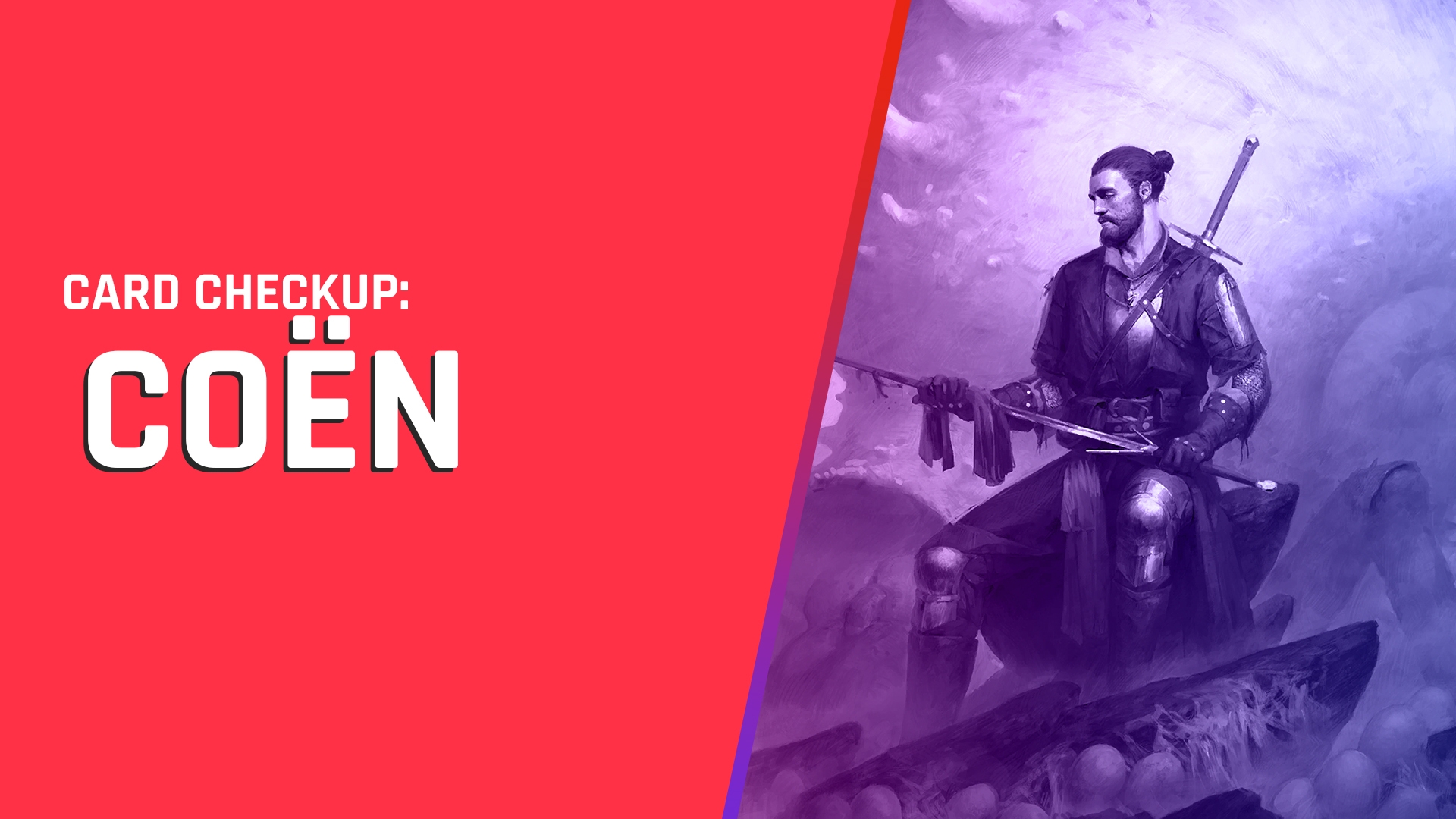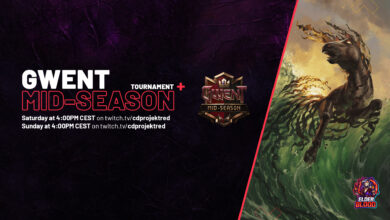
With Coën’s introduction in The Way of the Witcher expansion, he became the new poster child for lost-cause anti meta Nordlings. He’s temperamental to play, he needs a ton of set up, and, most importantly, he needs you to pretend Yrden doesn’t exist. He’s perfect.
Memes aside, while the card isn’t workable right now, there is considerable reason to believe it could spawn a new archetype of MathNR given the right support. For a combo card, he shows a surprising amount of flexibility, while also being part of a soft exodia combo when paired with Viraxas.
The Card:
The comparison to Schirrú is pretty obvious here, as the mechanics are basically the same, just inverted. Besides the fact that Coën boosts friendly units rather than destroying enemies, Coën also doesn’t destroy himself upon activating his ability. This allows him a lot more freedom in his gameplan than Schirrú, allowing him to get value through lining up a couple of taller units instead of being forced to go wide.
At seven provisions, Coën is the kind of card that could be thrown into a midrange deck as an optional win condition, or as an aggressive r2 bleeder. In this context he could do very well. The less resources you have to commit to a card like Coën, the less of a problem his unreliable game plan is.
Since Coën’s ability is an order, there is potential synergy with Viraxas. However, it’s not as simple as reactivating Coën’s order. While Coën doesn’t destroy himself, he doesn’t boost himself either. This means you have to boost him by the same amount he boosted the other units you lined up.
When designing a Viraxas/Coën combo, the first point value you activate Coën’s ability at is extremely important. You have to weigh how easy it is to get a bunch of other units to that point value against how easy it is to boost Coën to catch up with them.
At the moment, that number is seven. Northern Realms has access to a ton of competitive units that play for seven points (Baron, Viraxas, Donimir), and Northern Realms also has access to Kerack Marine. When activated at seven points, Coën’s ability boosts all other seven point units by four. Kerack Marine can boost Coën by this exact amount, enabling the Viraxas combo.
The combo gets even more dangerous when you take Adalia into account. Kerack Marine boosts her to seven, and leaves behind a three point body to be boosted to seven by the next Kerack Marine. With two marines in hand (reserving one to boost Coën) you can easily create two additional seven point units.
Now, obviously no opponent is going to let you play Donimir, Viraxas, Baron, and two Marines without destroying or damaging any of them. Well, if they’re playing Viy they will. Anyway, the goal here isn’t to line up every single card perfectly, it’s to have enough combo pieces that your opponent runs out of answers.
Even though the Viraxas/Coën soft exodia combo is certainly possible, it seems the card is designed so that’s not usually the best option. Coën’s low provision cost and high vulnerability to tech cards like Yrden and Igni points to a card that’s less an r3 finisher, and more a card designed to set up a short r3 with a prolonged r2 bleed.
In other words, rather than chasing enormous combos, Coën is meant for being used according to the current boardstate. He rewards an adaptive playstyle that lines up a few units for a solid value play.
Why is Coën bad?
As you can see, this card has a ton of potential, but clearly nobody is playing it. Where Coën really runs into problems isn’t in lining up other units, but in making sure Coën himself is buffed high enough.
The options that buff Coën before he hits the board just aren’t up to snuff. Kaer Seren is the most obvious option, but the units it spawns are usually only useful for an all-in witcher deck. Uprising charges are good for lining up other units, but usually aren’t enough to get Coën into range.
If you want to buff Coën before your opponent has a chance to answer him, you’ll usually have to use Amphibious Assault or Shieldwall charges. These work well enough, but they represent quite a commitment of resources.
Both of these options are extremely resource intensive. Amphibious Assault is a thirteen provision card that regularly plays for ten to twelve points. Shieldwall is a thirteen provision leader ability with only three charges. Overall, Coën’s strength is in being a flexible and low cost win condition, so requiring resource intensive cards to play him correctly kind of defeats the purpose.
Conclusion
While he may seem like an off-brand Schirrú, Coën is a combo card that lets you choose how many resources you commit to it. So flexible, in fact, that he can be used alongside almost any strategy that involves boosts.
The one thing he needs is a means to boost himself, whether in hand, in your deck, or the turn you play him. So if you’re interested in making Coën work, keep an eye on whether CDPR prints any cards that do this. Even a card like a targeted Griffin Mentor would be enough to give Coën a second look.
If you’re a masochist and you want to give Coën a try in the current patch, the best way to do it is to stick him in a Shieldwall Duel deck alongside Vysegota. It’s a more inconsistent version of a deck that’s already bad, but it does a good job of demonstrating how Coën can fit into a list with unrelated win conditions pretty easily.




